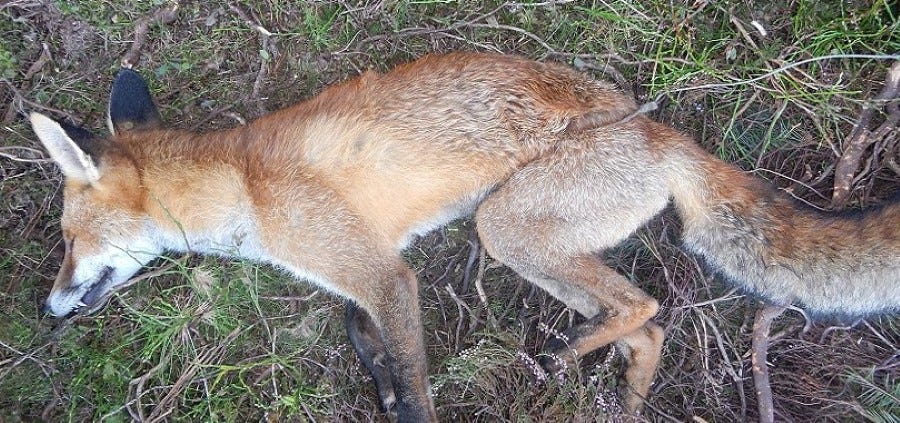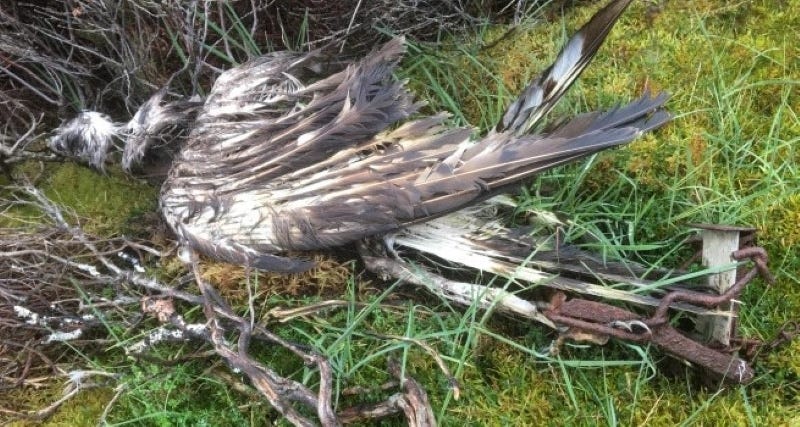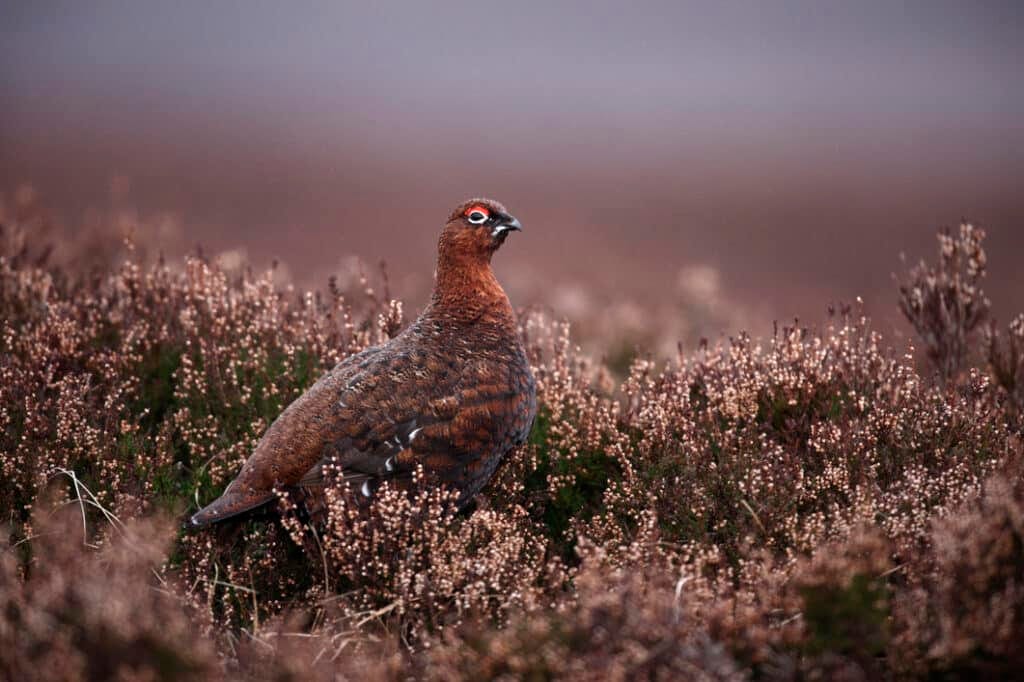Yesterday Holyrood passed the Wildlife Management and Muirburn (Scotland) Bill, stating on their website that “Scotland’s wildlife will benefit from increased protection thanks to a new law passed by the Scottish Parliament.” The new law has been designed to implement the recommendations set out in the Werritty Review which was published in December 2019.
What does the new Wildlife Management and Muirburn Act do?
- bans the practice of snaring in Scotland;
- bans the use of glue traps to catch rodents;
- gives greater powers to Scottish SPCA inspectors to tackle wildlife crime;
- introduces a new licensing framework for grouse moors;
- strictly regulates the use of muirburn, the controlled burning of vegetation on peatland.
What difference will the Bill make?
A seismic change would have been banning grouse shooting altogether, of course. His offhand remark about a ‘stated intention of deterring the persecution of raptors‘ speaks volumes about an attitude that is worth bearing in mind too – it has been illegal to shoot, poison, or trap birds of prey for decades. Had the industry taken that fact seriously this Bill would never have been written, so people like him need to acknowledge where and at whom fingers should really be pointed. More on that below…
But how much change to the grouse shooting industry will there really be? Full details on enforcement and how the legislation will be implemented haven’t been published yet, but here’s what we think we know so far:

Snares:
The new Act makes it “an offence to use a snare to trap a wild animal, or in any way that is likely to injure a wild animal”.
This is very good news. Snares are inherently cruel and primitive tools, and banning them is an enormous achievement even though it does just bring Scotland into line with most other European countries that have already banned them (England, a country overrun with shooting estates and influential lobbyists in key positions still retain them for now). Shooting organisations worked hard to convince MSPs that snares were now ‘humane cable restraints’ and nothing like the torture devices of old, but politicians largely held firm and presumably recognised (after huge pressure from the likes of excellent Scottish charity OneKind) that the vast majority of snares are placed on shooting estates to kill foxes (which are of course a key element of the very same wildlife the Bill set out to protect) just to protect industry profits – not for ‘conservation’ as claimed.
- Will it protect foxes from being killed though? There is no restriction at all on shooting foxes, and while grouse moors exist gamekeepers will do all they can to kill them.
Glue Traps:
Falling under ‘Wildlife Management’ and squarely aimed at domestic use, the new Act bans the use of glue traps used to catch mice and rats. The legislation includes fines of up to £40,000 and up to 12-month prison sentences for anyone using or purchasing them.
Good news again and in most quarters a no-brainer. The pain and fear experienced by an animal dying of dehydration as they’re stuck in glue can’t be over-estimated.
Not everyone seems to care about animal welfare though, and the overreaction of the so-called British Pest Control Association (BPCA) somewhat mirrors the wild rhetoric of the shooting industry when it inflates the importance of killing grouse to the Scottish economy. BPCA spokesperson Ian Andrew is quoted on the BPCA website saying, “We find it disappointing that politicians seem more concerned with protecting rodents than their citizens“. A ridiculous statement. The killing of rodents hasn’t been banned outright, of course, just their torture.
- How many of these things were being used on grouse moors is impossible to say but likely very few indeed, and with its focus on other parts of the Bill it’s hard to see how the shooting industry could plausibly object.

Muirburn:
Muirburn, says the Scottish government, is “the intentional and controlled burning of moorland vegetation to encourage new growth (either heather or grassland) for the management of moorland game and wildlife or for improving the grazing potential of the moorland for livestock or deer“.
In other words, it is the setting on fire of huge areas of land so that the shooting industry can produce more Red Grouse to be shot or more grazing areas for sheep (which will be sold to be eaten) or deer (which will be sold to be shot as well). It has nothing to do, then, with land ‘management’ for greater biodiversity or the public good, and as anyone outside the shooting industry recognises produces vast amounts of smoke and pollution.
Hedging its bets, the Scottish government says that “Research suggests that muirburn can have both beneficial and adverse effects. If it is undertaken without due consideration of all the possible consequences, it has the potential to have a serious negative impact on wildlife, soil quality, carbon sequestration, and the wider environment.”
- Time will tell whether estates will take those ‘serious negative impacts’ seriously, but if they get in the way of producing ‘surplus’ birds to be shot it’s doubtful.
Licencing framework:
According to the Scottish Government, “The Wildlife Management and Muirburn (Scotland) Bill was introduced primarily to address raptor persecution“. It has taken years of hard work by the likes of Raptor Persecution UK, the Scottish Raptor Study Group, and RSPB Scotland to push Scotland’s MPs into drawing up legislation that specifically refers to ‘raptor persecution’. Taking on the shameful denials that birds of prey are being killed on grouse moors at all by landowners and the ludicrous Scottish Gamekeepers Organisation, meant first collating scattered data proving routine persecution was taking place then convincing the public and legislators that it actually mattered.

Rannoch, a young Hen Harrier killed in an illegal trap on a Scottish grouse moor in 2019. RSPB Scotland.
The ‘licencing’ of grouse moors is inextricably tied to raptor persecution, then. Commit raptor persecution (or “if there is compelling evidence of unlawful activity or serious breaches of codes of practice by the licence holder“) and in theory estates can lose their licence and will have to cease trading (selling wild birds to shooters, in other words).
That sounds encouraging, but as many of us have pointed out time and time again, birds of prey are already fully protected by law. What has been missing (and may well still be missing, time will tell) is proper enforcement. Giving greater powers to SSPCA inspectors is very welcome, but gamekeepers break the law because the chances of being caught on a remote estate in the middle of the highlands are virtually nil. As is cooperation from estate owners who never turn in the criminals they employ. If the threat of a jail sentence hasn’t deterred anyone so far, why should the risk of losing a licence – which will be fiercely fought in the courts anyway – work any better? And – remembering the words of Ross Ewing above – it may well introduce an even greater element of ‘challenge’, driving wildlife crime whilst burying it at the same time.
Ironically this Bill may make shutting down the appalling grouse shooting industry harder in the long run, because the Scottish Government explicitly states it is about ensuring the ‘sustainability‘ of grouse moors rather than their closure. Licencing ignores the killing of hundreds of thousands of Red Grouse – one of the country’s most iconic birds and certainly part of the wildlife that supposedly benefits from the Bill. The widespread trapping and killing of native predators will continue – just not using snares. And once implemented it is a safe bet that the industry will turn around and say “You antis have got what you wanted now bugger off“.
- The industry may be kicking and screaming in public, but we have to seriously wonder what they’re saying behind closed doors as they ready themselves for yet another shooting season in a few months time.

An achievement, but nowhere near the end of the fight.
There are undoubtedly significant gains for wildlife in the Bill and its passing is a major shift away from the blanket acceptance of all things ‘grouse shooting’ that has predominated for so long, but Red Grouse are depressingly forgotten or sidelined over and over again when it comes to discussions about grouse moors. Why don’t they seem to figure in the thinking of so many campaigners and conservationists? They may be sentient wild birds, but they’re not ‘rare’ – and many organisations seem reluctant to take on the very influential and wealthy people who like to shoot them.
Yes, we should celebrate the banning of snares and glue traps, welcome the increase in powers for SSPCA inspectors, and perhaps the threat of having licences withdrawn may well impact grouse estates operating on the edges of legality, but the real gamechanger for Scotland’s wildlife would be to close this damnable industry down for good.

